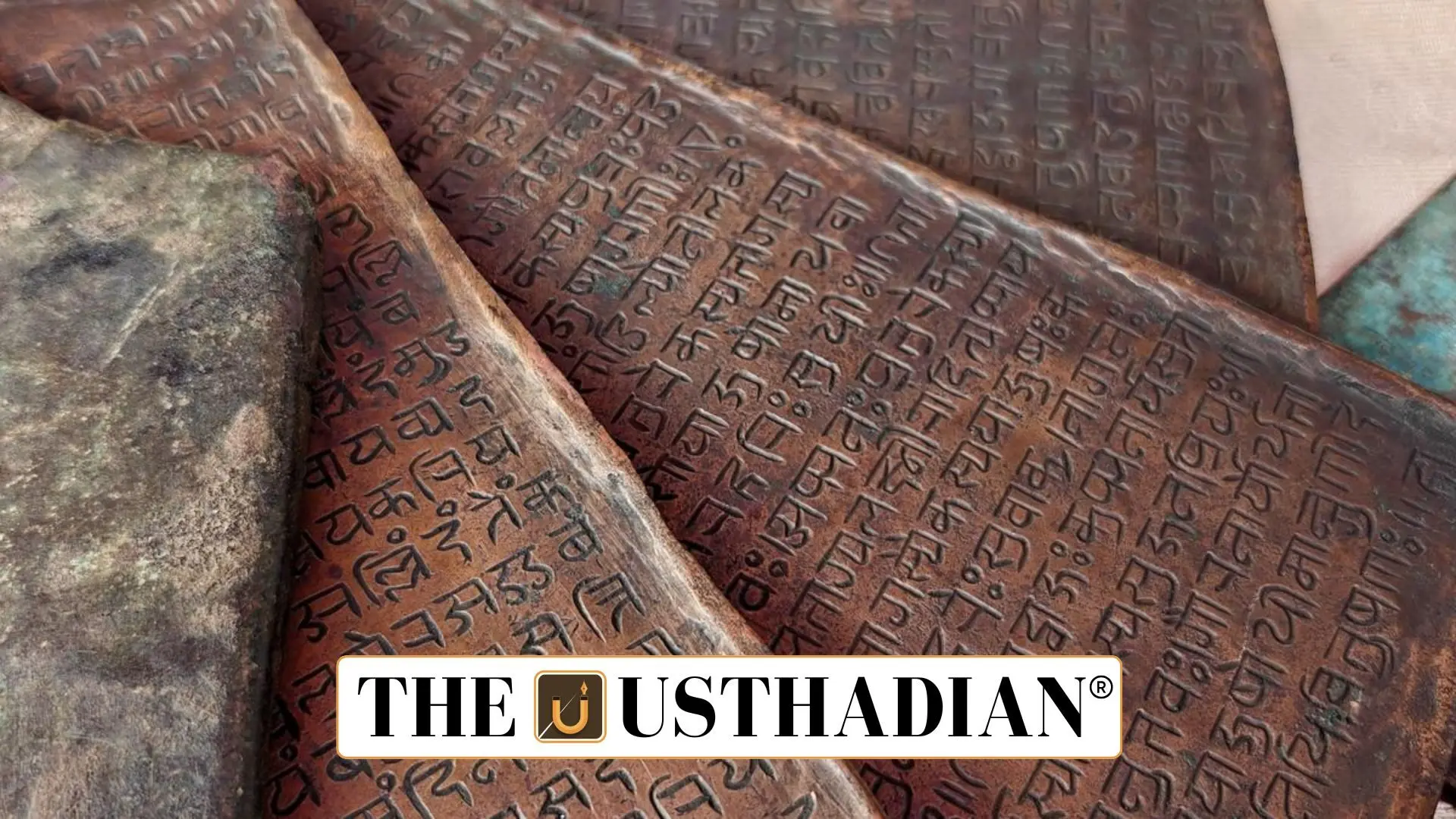Rediscovery of Devaraya I’s Coronation Records
Copper Plates of Devaraya I: A New Insight into Vijayanagara History : The recent discovery of copper plates from the reign of Devaraya I has brought fresh clarity to the early 15th-century Vijayanagara Empire. These plates, inscribed in Sanskrit, Kannada, and Nāgarī scripts, were issued during his coronation in 1406 CE and offer rare, authentic evidence about his ascent to power. Uniquely, the royal seal features Vamana, deviating from the usual Varaha insignia of the empire, making it a significant iconographic shift.
Tracing Sangama Lineage and Village Grant Details
The plates provide key genealogical information about the Sangama Dynasty, listing Devaraya I and his five sons, reinforcing dynastic continuity. A major highlight is the grant of Gudipalli village to Brahmins, reflecting the Vedic institutional structure of that era. With gotra-wise allocations and boundary demarcations recorded in Kannada, the grant also reveals the high administrative standards of Vijayanagara governance.
Cultural Flourishing and Architectural Patronage
Under Devaraya I, Kannada literature and temple architecture thrived. His court supported poets like Madhura, who contributed to Jain literary traditions. The Hazare Rama Temple, constructed during his reign, is a landmark of Deccan architectural excellence, adorned with intricate bas-reliefs depicting Ramayana scenes.
Engineering Marvels in Irrigation and Urban Growth
Devaraya I initiated major irrigation projects to address the capital’s water needs. He constructed a barrage across the Tungabhadra River and a 25-kilometre aqueduct to supply water to Vijayanagara city. These feats transformed the capital into one of the largest and most planned cities of the 15th century, showcasing his visionary urban policy.
Military Strategy and Diplomatic Expansion
In his quest to consolidate power, Devaraya I battled the Bahmani Sultanate and the Velamas, securing victories that expanded his dominion. He incorporated Muslim archers and cavalry units into his forces, pioneering a pragmatic approach to military diplomacy. His defeat of Firoz Shah marked a key turning point in asserting Vijayanagara supremacy.
Inclusive Governance and Administrative Legacy
What sets Devaraya I apart was his inclusive governance model. He built facilities for Muslim soldiers and mediated inter-faith disputes, promoting religious harmony. His secular administration laid the groundwork for political stability in a diverse imperial society, reinforcing Vijayanagara’s position as a cosmopolitan empire.
Static GK Snapshot
Copper Plates of Devaraya I: A New Insight into Vijayanagara History :
| Feature | Details |
| Ruler | Devaraya I (1406–1422 CE) |
| Dynasty | Sangama Dynasty of Vijayanagara Empire |
| Key Discovery | Copper plates issued during Devaraya I’s coronation (1406 CE) |
| Language of Inscriptions | Sanskrit, Kannada, Nāgarī |
| Royal Emblem on Plates | Vamana (instead of traditional Varaha) |
| Village Granted | Gudipalli and its hamlets to Brahmins |
| Major Construction | Hazare Rama Temple, Tungabhadra barrage, aqueduct |
| Military Success | Victory over Firoz Shah, Bahmani and Velama conflicts |
| Administrative Feature | Secular and inclusive governance |
| Notable Poet in Court | Madhura (Jain literature) |








